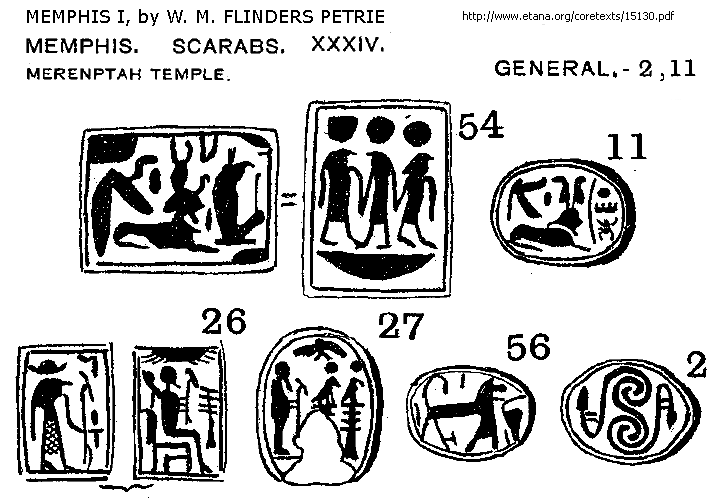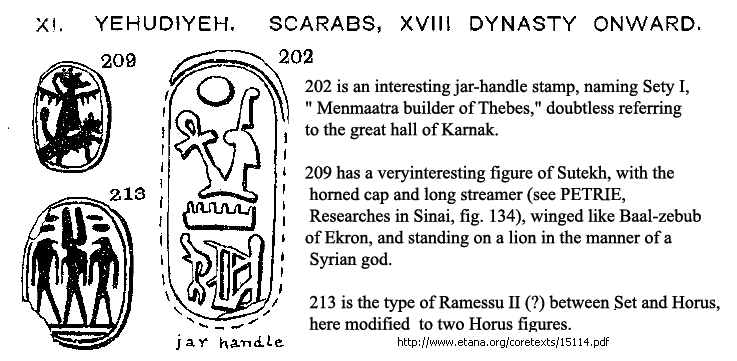
"202 is an interesting jar-handle stamp, naming Sety I, 'Menmaatra builder of Thebes,' doubtless referring to the great hall of Karnak."
"The was scepter became the emblem of Thebes (the Egyptian name for which was waset)" ('or 'ouset' or 'uast')
(Richard Wilkinson, _Reading Egyptian Art_)
See 'Waset' detail from a relief at Brooklyn Museum)
"209 has a very interesting figure of Sutekh, with the horned cap and long streamer (see PETRIE, Researches in Sinai, figure. 134),
winged like Baal-zebub of Ekron, and standing on a lion in the manner of a Syrian god."
"213 is the type of Ramessu I1 (?) between Set and Horus, here modified to two Horus figures."
|
Thus says Petrie in 1906. However later scholarship gives new light, as Wilkinson shows this is not so, for even when Set is not shown, he is still understood to be there:
Giving examples of when 'two' actually represents 'four', "in a classic study of the royal purification ritual, Sir Alan Gardiner showed that the two gods usually depicted performing the act of lustration - Horus and Thoth (ill. 124) - actually represented the four gods of the cardinal points Horus, Seth, Thoth, and Anti who transferred to the king a portion of their power as the divinities of the four quarters of the world. Private representations of funerary purifications (which were symbolically parallel) actually show four priests performing the rite, but the royal depictions of this ritual almost always depict only two of the deities, perhaps for purposes of symmetry and representional balance. Whatever the reason, once again we see two representing four and thereby carrying the connotation of the extended number, though the use of the two deities Horus and Thoth (paralleling the common use of Horus and Seth) may also have connoted the dualism of Upper and Lower Egypt." (from _Symbol and Magic in Egyptian Art_, by Richard H. Wilkinson, page 139)
I'm wondering if this 'Anti' to whom Wilkinson refers is 'Antywey', "Antewy, a combined form of Horus and Seth", as Teeter speaks of in _Treasures from the Collection of the Oriental Institute, University of Chicago_, page 42
Thus I'm thinking whatever Pharoah is being blessed in this amulet, it still counts.
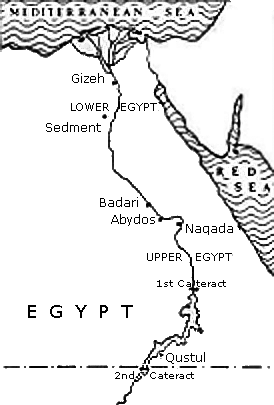 Small map adapted from this site which shows Upper and Lower Egypt. (The south is higher in elevation which makes it the 'upper') (source Budge via Rice University)
"The most
interesting point to notice is that in the second
foundation the shrine is dual, though single in the
first. Badari is in the nome of " The Two Gods."
What the change in the number of the shrines
implies, has to be worked out. A coupling of the
worship of Set with that of Horus in the New
Kingdom may just possibly be the explanation."
There are a great many prehistoric slate palettes featuring a dual theme, and possibly Set and Horus are being represented in them:
|
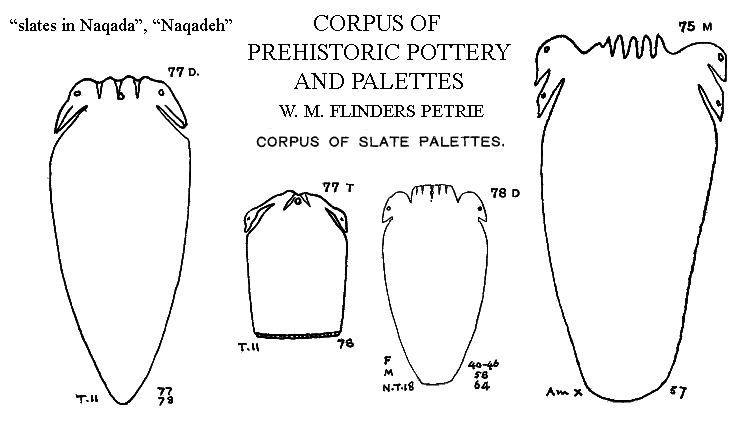
One even appears to have four heads...
The Petrie museum website has a photo of one
|
Brunton further notes:
"It may be suggested
that the name Shau is connected with Set who was
called Sha in early times; and the town of Sha-sehotep
(Shotb) is only a few miles north of Badari."
Budge's Hieroglyphic dictionary has, "Sha, a fabulous animal like a greyhound with a straight tail in the form of an axe", which we know is Set's representation in animal form.
|
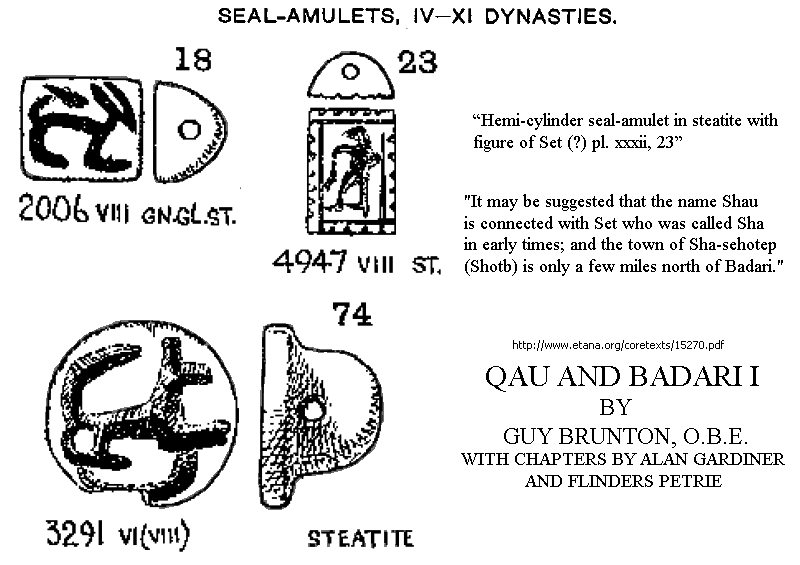
One amulet may be a Sha, while the bee appears to have a head of Set,
Also, Brunton thinks no. 23, "Hemi-cylinder seal-amulet in steatite with
figure of Set (?)"

_Hyksos and Israelite Cities_, Yehudiyeh, Scarabs, XVIII Dyn. onwards,
The head of Set, along with the fork of his tail?
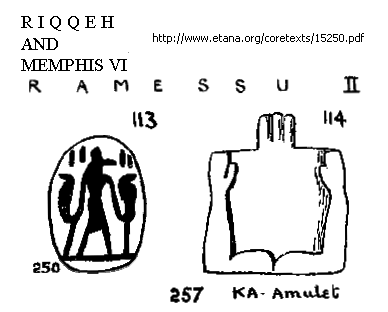
The author of Riqqeh and Memphis VI makes no mention of 113,
which appears to be Set with Uraeus snakes, but merely says the KA amulet is rare.
